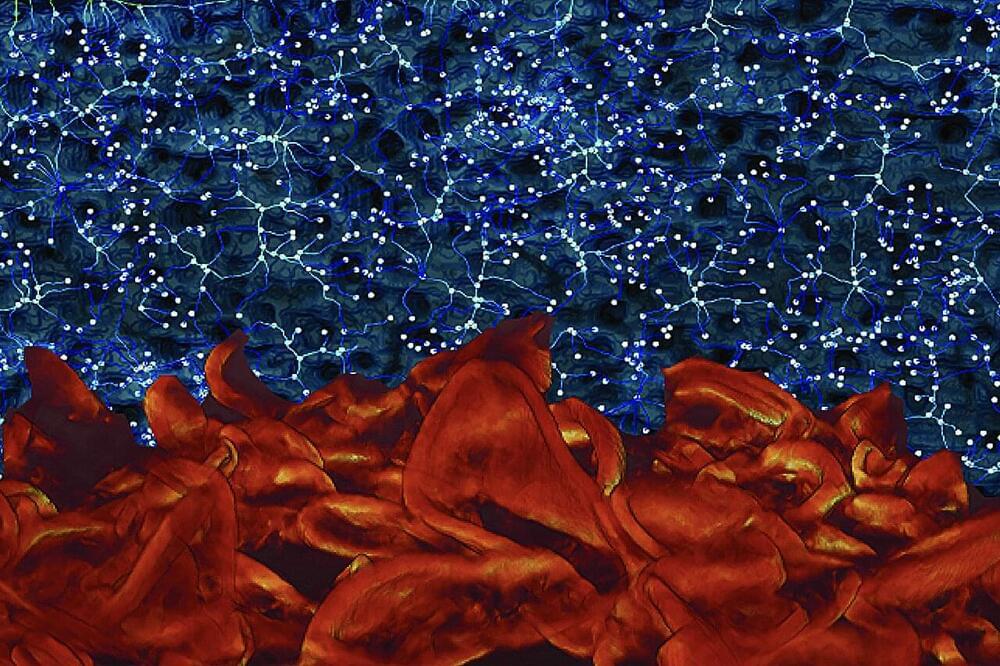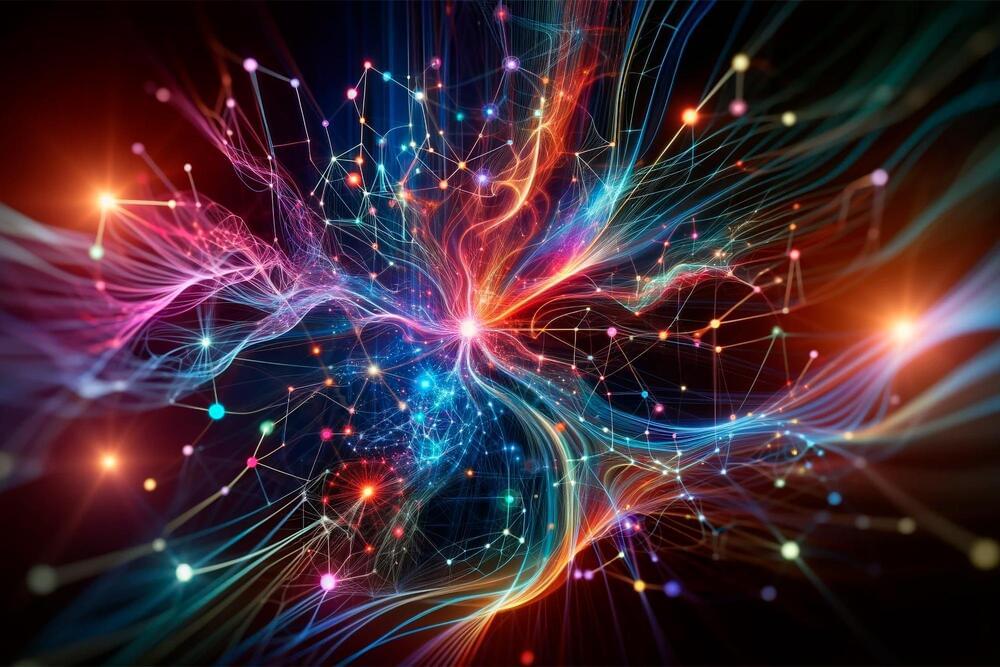Check out the math & physics courses that I mentioned (many of which are free!) and support this channel by going to https://brilliant.org/Sabine/ where you can create your Brilliant account. The first 200 will get 20% off the annual premium subscription. You have probably heard people saying that the problem with quantum mechanics is that it’s non-local or that it’s impossible to understand or that it defies common sense. But the problem is much simpler, it’s that quantum mechanics is a linear theory and therefore doesn’t correctly reproduce chaos. Physicists have known this for a long time but it’s rarely discussed. In this video I explain what the problem is, what physicists have done to try and solve it, and why that solution doesn’t work. Subscribe to my weekly science newsletter: https://sabinehossenfelder.com/ You find the estimate for Saturn’s moon Hyperion in Zurek’s review https://arxiv.org/abs/quant-ph/0105127 A much easier to digest and more readable review by Michael Berry is here: https://michaelberryphysics.files.wor… you can find a brief summary on Sean Carroll’s blog https://www.preposterousuniverse.com/… 0:00 Intro 0:27 The trouble with Hyperion 4:04 The alleged solution 6:02 The trouble with the solution 7:46 What a real solution requires 10:31 Sponsor message.
Category: mathematics – Page 63
How Chaos Control Is Changing The World
Try out my quantum mechanics course (and many others on math and science) on Brilliant using the link https://brilliant.org/sabine. You can get started for free, and the first 200 will get 20% off the annual premium subscription.
Physicists have known that it’s possible to control chaotic systems without just making them even more chaotic since the 1990s. But in the past 10 years this field has really exploded thanks to machine learning.
The full video from TU Wien with the inverted double pendulum is here: • Double Pendulum on a Cart.
The video with the AI-trained racing car is here: • NeuroRacer.
And the full Boston Dynamics video is here: • Do You Love Me?
👉 Transcript and References on Patreon ➜ / sabine.

Never-Before-Seen Quantum Hybrid State Discovered on Arsenic Surface
Physicists have just found something no one expected, lurking on the surface of an arsenic crystal.
While undertaking a study of quantum topology – the wave-like behavior of particles combined with the mathematics of geometry – a team found a strange hybrid of two quantum states, each describing a different means of current.
“This finding was completely unexpected,” says physicist M. Zahid Hasan of Princeton University. “Nobody predicted it in theory before its observation.”
The Closest We Have to a Theory of Everything
Check out the math & physics courses that I mentioned (many of which are free!) and support this channel by going to https://brilliant.org/Sabine/ where you can create your Brilliant account. The first 200 will get 20% off the annual premium subscription. In the diagram at 4 minutes 30 seconds, the labels for h_1 and h_2 are mixed up. Sorry about that! Subscribe to my weekly science newsletter: https://sabinehossenfelder.com/ Everything I am talking about here is standard material of undergrad physics textbooks. My personal favorite is good old Goldstein https://en.wikipedia.org/wiki/Classic… On variational principles more specifically I quite like this textbook: https://link.springer.com/book/10.100… You can support me on Patreon: / sabine 0:00 Intro 0:45 Optimization 1:35 Shortest Path 3:20 Least Time 5:36 Least Action 10:27 Quantum Mechanics 11:53 Sponsor Message.

Identifying the Neural Bases of Math Competence Based on Structural and Functional Properties of the Human Brain
It is well known that the human brain is a complex system that comprises not only individual brain regions but also distributed neural networks. The human brain is efficiently organized by integrating information across various brain regions to minimize the cost of information processing while maximizing the overall efficiency of the brain networks. Modern neuroimaging techniques allow us to identify distinct local cortical regions and investigate large-scale neural networks underlying math competence both structurally and functionally. To gain insights into the neural bases of math competence, this review aims to find answers based on structural and functional properties of the human brain in both typical and atypical populations of children and adults. Specifically, for atypical populations, we will focus on individuals with math learning deficits. Math learning deficits are neurodevelopmental disorders that impair an individual’s ability to learn and perform math-related tasks. Dyscalculia is a specific type of math learning deficit that affects the development of arithmetical skills and other basic numerical skills (Kuhl, Sobotta, Legascreen Consortium, & Skeide, 2021; Kucian et al., 2014; Rykhlevskaia, Uddin, Kondos, & Menon, 2009). When reviewing findings from atypical population, we will focus on individuals with math learning deficits including those with dyscalculia.
As math competence encompasses many different skills, for studies involving adults, this review will selectively examine the neural bases of relatively complex math skills, such as evaluation of mathematical statements (e.g., “Any equilateral triangle can be divided into two right triangles”; Amalric & Dehaene, 2016, 2019). For studies involving children, we will also include fundamental math abilities such as arithmetic skills that are commensurate with the math skills young children master. However, basic number comprehension and number comparison skills are outside the scope of this review. Moreover, we will consider whether neural markers associated with math competence are unique to math or may be reflective of academic achievement and cognitive abilities more generally.

Frontiers: Most mathematical cognition research has focused on understanding normal adult function and child development as well as mildly and moderately impaired mathematical skill
Often labeled developmental dyscalculia and/or mathematical learning disability. In contrast, much less research is available on cognitive and neural correlates of gifted/excellent mathematical knowledge in adults and children. In order to facilitate further inquiry into this area, here we review 40 available studies, which examine the cognitive and neural basis of gifted mathematics. Studies associated a large number of cognitive factors with gifted mathematics, with spatial processing and working memory being the most frequently identified contributors. However, the current literature suffers from low statistical power, which most probably contributes to variability across findings. Other major shortcomings include failing to establish domain and stimulus specificity of findings, suggesting causation without sufficient evidence and the frequent use of invalid backward inference in neuro-imaging studies. Future studies must increase statistical power and neuro-imaging studies must rely on supporting behavioral data when interpreting findings. Studies should investigate the factors shown to correlate with math giftedness in a more specific manner and determine exactly how individual factors may contribute to gifted math ability.
A disproportionately large amount of scientific advancement throughout history has occurred due to cognitively gifted individuals. However, we know surprisingly little about the cognitive structure supporting gifted mathematics. The current understanding is that human mathematical ability builds on an extensive network of cognitive skills and mathematics-specific knowledge, which are supported by motivational factors (Ansari, 2008; Beilock, 2008; Fias et al., 2013; Szűcs et al., 2014; Szűcs, 2016). To date, most psychological and neuroscience studies have examined potentially important factors only in children and adults with normal mathematics as well as in children with poor mathematical abilities (e.g., in children with mathematical learning disability or developmental dyscalculia). In contrast, those with high levels of mathematical giftedness received relatively little attention.

AI now beats humans at basic tasks — new benchmarks are needed, says major report
Artificial intelligence (AI) systems, such as the chatbot ChatGPT, have become so advanced that they now very nearly match or exceed human performance in tasks including reading comprehension, image classification and competition-level mathematics, according to a new report (see ‘Speedy advances’). Rapid progress in the development of these systems also means that many common benchmarks and tests for assessing them are quickly becoming obsolete.
These are just a few of the top-line findings from the Artificial Intelligence Index Report 2024, which was published on 15 April by the Institute for Human-Centered Artificial Intelligence at Stanford University in California. The report charts the meteoric progress in machine-learning systems over the past decade.
In particular, the report says, new ways of assessing AI — for example, evaluating their performance on complex tasks, such as abstraction and reasoning — are more and more necessary. “A decade ago, benchmarks would serve the community for 5–10 years” whereas now they often become irrelevant in just a few years, says Nestor Maslej, a social scientist at Stanford and editor-in-chief of the AI Index. “The pace of gain has been startlingly rapid.”

Nothing is everything: How hidden emptiness can define the usefulness of filtration materials
Voids, or empty spaces, exist within matter at all scales, from the astronomical to the microscopic. In a new study, researchers used high-powered microscopy and mathematical theory to unveil nanoscale voids in three dimensions. This advancement is poised to improve the performance of many materials used in the home and in the chemical, energy and medical industries—particularly in the area of filtration.
Magnification of common filters used in the home shows that, while they look like a solid piece of material with uniform holes, they are actually composed of millions of randomly oriented tiny voids that allow small particles to pass through. In some industrial applications, like water and solvent filtration, paper-thin membranes make up the barriers that separate fluids and particles.
“The materials science community has been aware of these randomly oriented nanoscale voids within filter membranes for a while,” said Falon Kalutantirige, a University of Illinois Urbana-Champaign graduate student.
Warp Drives: New Simulations
Learn more from a science course on Brilliant! First 30 days are free and 20% off the annual premium subscription when you use our link ➜ https://brilliant.org/sabine.
Hyperjumps, wormholes, and warp drives sound like science fiction, but they’re actually based on real science! Though I believe out of the three, warp drives are the most plausible. The math seems to agree. Today I want to tell you about a new way of analysing and visualizing warp drives.
Code: https://github.com/pbbp0904/WarpFactory.
🤓 Check out my new quiz app ➜ http://quizwithit.com/
💌 Support me on Donatebox ➜ https://donorbox.org/swtg.
📝 Transcripts and written news on Substack ➜ https://sciencewtg.substack.com/
👉 Transcript with links to references on Patreon ➜ / sabine.
📩 Free weekly science newsletter ➜ https://sabinehossenfelder.com/newsle…
👂 Audio only podcast ➜ https://open.spotify.com/show/0MkNfXl…
🔗 Join this channel to get access to perks ➜
/ @sabinehossenfelder.
🖼️ On instagram ➜ / sciencewtg.
#science #sciencenews #warpdrives #physics

Unlocking AI’s Black Box: New Formula Explains How They Detect Relevant Patterns
A UC San Diego team has uncovered a method to decipher neural networks’ learning process, using a statistical formula to clarify how features are learned, a breakthrough that promises more understandable and efficient AI systems. Credit: SciTechDaily.com.
Neural networks have been powering breakthroughs in artificial intelligence, including the large language models that are now being used in a wide range of applications, from finance, to human resources to healthcare. But these networks remain a black box whose inner workings engineers and scientists struggle to understand. Now, a team led by data and computer scientists at the University of California San Diego has given neural networks the equivalent of an X-ray to uncover how they actually learn.
The researchers found that a formula used in statistical analysis provides a streamlined mathematical description of how neural networks, such as GPT-2, a precursor to ChatGPT, learn relevant patterns in data, known as features. This formula also explains how neural networks use these relevant patterns to make predictions.